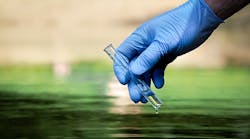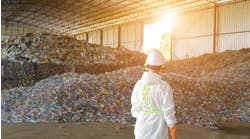The U.S. Environmental Protection Agency (EPA) cites many studies on the hazards associated with polyfluoroalkyl substances (PFAS). These risks include decreased fertility, developmental delays in children, increased risk of some cancers, reduced immune response to infections, and risk of obesity.
And the list continues to grow. In August, the Keck School of Medicine at the University of Southern California, Los Angeles, published a study in JHEP Reports linking PFAS to non-viral hepatocellular carcinoma, the most common type of liver cancer. It is the first study to confirm the risk of liver cancer using human samples, say the authors. The scientists report PFAS disruption to metabolic processes in the liver can lead to non-alcoholic fatty liver disease (NAFLD) and a much higher risk of developing cancer. The report also notes a dramatic and unexplained rise in the disease around the globe in recent years; NAFLD is expected to affect 30% of all adults in the United States by 2030.
Also in August, an article by researchers from Stockholm University, Sweden, and ETH Zurich, Switzerland, published in Environmental Science & Technology, revealed PFAS levels in environmental media are now ubiquitously above guideline levels.
“There has been an astounding decline in guideline values for PFAS in drinking water in the last 20 years. For example, the drinking water guideline value for one well-known substance in the PFAS class, namely cancer-causing perfluorooctanoic acid (PFOA), has declined by 37.5 million times in the U.S.,” says Ian Cousins, the lead author of the study and professor at Stockholm’s Department of Environmental Science.
“Based on the latest U.S. guidelines for PFOA in drinking water, rainwater everywhere would be judged unsafe to drink,” Cousins adds.
However, as evidence against PFAS builds, so too does research into strategies to counter them.
Chemical and civil engineers at the University of Illinois, Chicago (UIC) have been awarded just over $1 million to further develop their reactive electrochemical membrane (REM) filtration system designed to trap and destroy PFAS. The system converts traditional filtration membranes into a reactive surface. The small pores in the membrane trap contaminants and electricity applied to the membrane causes reactions that break PFAS molecules apart.
The engineers will use the new funding for a three-year project that will characterize and optimize efficient electrocatalysts to successfully remove and destroy PFAS at high levels with low energy consumption. They also will analyze other systems for comparison and best practices in deploying the technology at a large scale in practical, real-world applications.
“While REM filtration is one of the only ways to destroy PFAS, these systems so far work best in a limited number of controlled conditions. Our challenge is to make these systems work in the environment,” UIC team leader and professor of chemical engineering Brian Chaplin notes.
Meanwhile, chemical engineers and biologists at Texas A&M AgriLife, College Station, Texas, have developed a new bioremediation material they say is more sustainable and cheaper than commercial applications currently used to clean up PFAS.
The material, called “Renewable Artificial Plant for In-situ Microbial Environmental Remediation,” or RAPIMER, adsorbs PFAS and holds them in place for bioremediation by the fungus Irpex lacteus. Derived from inexpensive and sustainable lignin, RAPIMER is thermo- and hydrostable, biodegradable and renewable.
“We produced a sustainable plant material that could be used to concentrate the PFAS chemicals,” says Susie Dai, associate professor at Texas A&M.
“The plant’s cell wall material serves as a framework to adsorb the PFAS. Then this material and the adsorbed chemical serve as food for a microbial fungus. The fungus eats it, it’s gone, and you don’t have the disposal problem. Basically, the fungus is doing the detoxification process,” she explains.
In another recent development, engineers at the University of California, Riverside, Calif., report selective breakdown of fluorinated carboxylic acids (FCA) by common microorganisms. FCA are bioaccumulative and extremely persistent in the environment.
Building on previous work reporting successful microbial defluorination of a fully fluorinated PFAS structure by replacing carbon-fluorine bonds with carbon-hydrogen bonds, the new study, published in Environmental Science & Technology, shows the point of entry for the anaerobic microbes was a double bond between carbon atoms located next to the carboxyl group of the FCA molecules.
Trifluoromethyl branches on the double bond could further enhance the biodegradability, they note. This work continues.
Seán Ottewell is Chemical Processing's editor at large. You can email him at [email protected].




